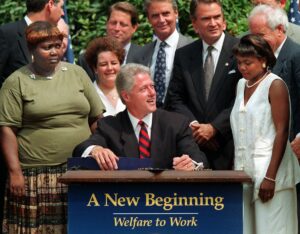House HWM Legislation a Good Start but Legislature Should Address Opportunities

On Monday, October 25, the Commonwealth’s House Ways and Means (HWM) Committee released a bill that details how the state will spend the billions of dollars that Massachusetts received through the American Rescue Plan Act (ARPA). In total, the Commonwealth received $8.7 billion from the federal government, with $5.3 billion allocated to the state and $3.4 billion designated for municipalities.
Unfortunately, some key priorities that will help the most vulnerable of the state’s residents — those who this funding is supposed to help — were left out of the HWM bill. The bill includes no support for Right to Counsel, despite the fact that the COVID Eviction Legal Help Program (CELHP) has been successful in preventing evictions. There is also no increase in grants for children living in deep poverty.
President Biden and Congress made their priorities clear when they passed ARPA this past spring. These funds are meant to help the most vulnerable, the people struggling to put food on the table, keep a roof over their heads, and have access to health care. This current iteration of the bill is a good start, but does not go far enough in meeting those goals and investing in the Commonwealth’s human capital.
Reconsidering Welfare Reform
 Twenty-five years ago this week, President Clinton signed “The Personal Responsibility and Work Opportunity Reconciliation Act” – better known as the Welfare Reform Act – into law. The bill was controversial at the time, especially among anti-poverty advocates who worried that the law’s impact on people living in poverty would be significant and significantly harmful.
Twenty-five years ago this week, President Clinton signed “The Personal Responsibility and Work Opportunity Reconciliation Act” – better known as the Welfare Reform Act – into law. The bill was controversial at the time, especially among anti-poverty advocates who worried that the law’s impact on people living in poverty would be significant and significantly harmful.
Turns out our fears were very much founded.
The results of the law have been devastating. Income inequality has grown exponentially in the last thirty years. According to the Center for Budget and Policy Priorities, “the best survey data show that the share of wealth held by the top 1 percent rose from 30 percent in 1989 to 39 percent in 2016, while the share held by the bottom 90 percent fell from 33 percent to 23 percent.” There are many structural reasons for the concentration of wealth, not the least of which is the fact that sometime in the 1970s, wages and productivity decoupled, meaning that while people were working longer hours, that hasn’t been reflected in their paycheck. But it’s also not difficult to imagine that our porous social safety net has also played a role.
As inequality becomes more prevalent in our society and poverty ever more punitive, we all realize that the time has come to rebuild our safety net. It’s time to reform welfare reform.
